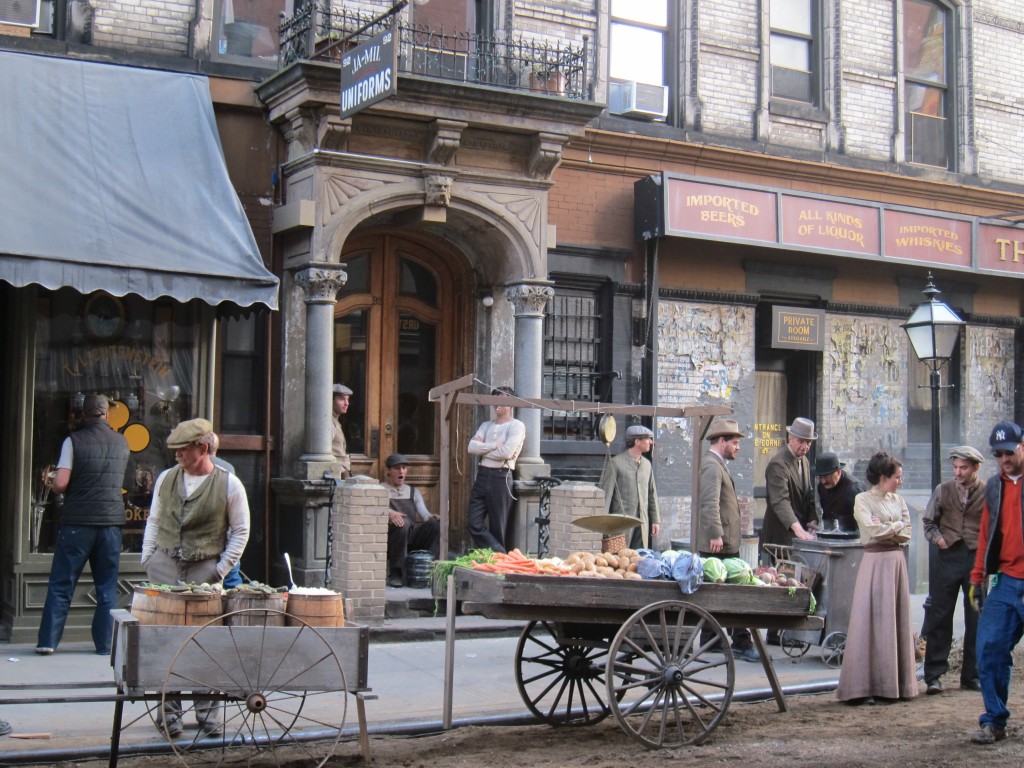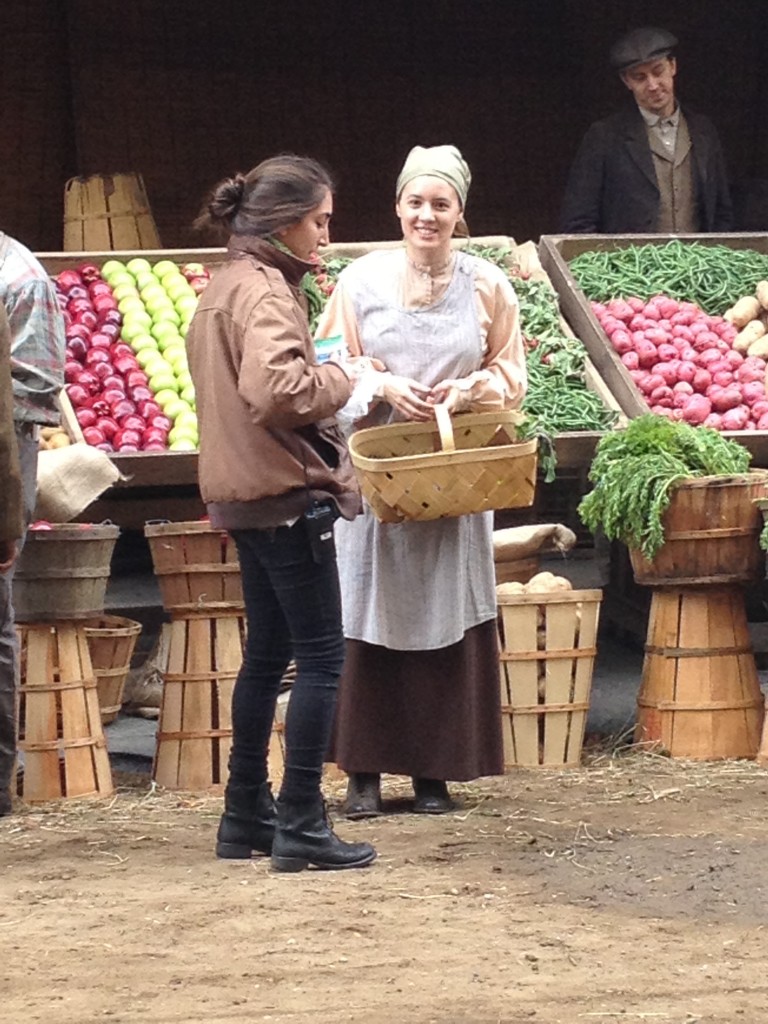Blog Archive
In THE KNICK Of Time
A year and a half ago – before I started working at The Tenement Museum – I spent a day as a poor working-class woman in the Lower East Side in the year 1900. I was a background actor – also known as an “extra” – for Steven Soderbergh’s Cinemax show The Knick.
After applying to be a background actor for the show, I was called in to have a fitting with the wardrobe department. I was to be a lower-class working woman, and they dressed me up in what a poor woman would have worn in the year 1900. This look included a plain beige blouse, a long brown wool skirt, an apron, dark leather boots and a handkerchief wrapped around my head.
When I got to the set, which was, fittingly, right around the corner from The Tenement Museum, at the intersection of Broome and Orchard, I was blown away by how much the set decorators had transformed the area to the way it probably would have looked over a hundred years ago. The paved roads were covered with dirt, cars were moved out of sight and instead there was a carriage being pulled by horses. Signs advertising little shops were put up and dozens of extras filled the area dressed as pedestrians, from the working-class poor, like me, to upper-class citizens, dressed in fashionable dresses and snazzy suits. And of course, lots of pushcarts led by peddlers, filled with goods and food that people back then depended upon.
I was given a basket with some vegetables to make it look like I was going food shopping. The Assistant Director told me to act interested in buying a chicken from a chicken cart on the street.
When director Steven Soderbergh yelled ‘Extras!’ we would start doing whatever we had been told to do in order to set the scene. When he yelled ‘Action!’ the main action of the scene would occur. For other shots they set up, I was to cross the street, from one side of Broome to the other.
In those moments, when everyone was acting and setting this turn of the century scene in the Lower East Side, it really felt like I was in another time. Surrounded by children playing in the street, watching peddlers sell their goods, I really felt like I was checking out the best chicken to buy. It was easy to feel like a woman living at the turn of the century. This was as close to time travel as it could get.
The Knick’s first season aired in the summer of last year, and I eagerly awaited and watched the series, and was not let down.
The Knick focuses on Dr. John W. Thackery (played by Clive Owen) and the other staff at a fictionalized version of the Knickerbocker hospital in New York in the year 1900, but a place dealing with realistic problems and medical innovation.
The Knick’s staff is operated by pioneering surgeons who struggle to overcome the limitations of the period’s medical understanding and practice. But medicine was just in its infancy then, and mortality rates were terribly high. Dr. Thackery (whose character is based on Dr. William Stewart Halsted – an innovating surgeon) is the newly appointed head of surgery, and battles his cocaine and opium addictions as well as feeds his ambitions for medical discovery. Just as legislation was about to be passed in 1901 mandating electricity and plumbing be installed in the tenements of the Lower East Side, the first episode of The Knick depicts the momentous installation of electricity in the hospital.
It was crucial for the show’s creators to get the time period accurate. In fact, Dr. Stanley Burns, founder and CEO of The Burns Archive, was brought in to serve as the on-set medical advisor and works closely with the production to make the hospital scenes as realistic and authentic as possible
The show is currently in production on the second season and will air in the last quarter of the year.
– Arielle Grinshpan

